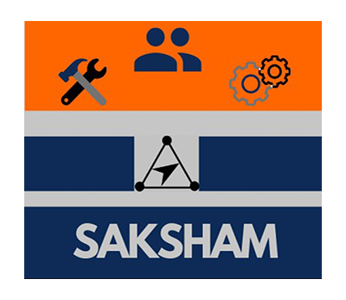This article is the precursor to a detailed white paper on the facility management industry, to be derived out of conversations with millions of people in this and related sectors. This article aims to give a glimpse into the thinking of this workforce and demonstrate how a deep pulse on their behaviour, skills and mindset is critical to the growth of the businesses in this industry.

Security guards, janitors, housekeeping staff, pantry staff, liftmen, and various other roles belong to this ecosystem of facility management. This ecosystem is generally considered to be at the bottom of the pyramid of employment both by their employers and the employees themselves.
But if this changes, and all stakeholders start believing that these roles mark the beginning of careers in this workforce, whatever age group they may be, they can be empowered uniquely. After all, being a security guard gives one the learnings of being patient, being alert, and builds customer centricity in their very existence. These traits can be used in multiple ways in the future.
If the people in this workforce start understanding their abilities and potential, they will first start getting an increased income over a period of time, and some may even look to move out into other roles later on, with the permission of their existing organisation that they trust and believe in. But they will not do so immediately. They will remain stable for a long period and will be high performers while being so stable. This is what will help businesses grow their profits by extracting the best from the bottom of their employee pyramid.
Our analysis shows that this segment gets empowerment through the following activities:
- Providing them more dignity at work
- Showing them the value of their work
- Engaging with their families and showing their families the value of their work
- Helping them with additional savings or additional income, through guidance on their finances
- Treating them with personalised incentives, just like white-collared employees demand today
- Getting a sense of being heard by the management that they work for, and not feeling isolated while working remotely
In addition, we have identified specific traits of people and how those traits require specific kinds of empowerment activities, not necessarily mentioned above. The above is just a reflection of some of the general pointers.
Let’s deep dive into some interesting insights about this workforce. These are surficial insights, and if companies that employ this workforce have an in-depth personalised knowledge of these insights, they can create policies and run interventions that can further enhance their ability to extract the best from this workforce.
Did you know:
- Amongst the low-income workforce segment, the facility management workforce has the lowest percentage of migrants. This means the majority of this staff are locals staying with their families, even in metropolitan areas.
- For the staff falling under young age groups, incentives that are related to community-building exercises work the best! Make them participate in sports and games with others in the same geographical area and see the magic, in terms of making them more attached to the company. This can be personalised with deeper knowledge.
- When given a choice between an increase of Rs 1000 per month in their salary and more respect for their work by their community, the split is almost equal, showing a large population demands more respect for themselves. Respect more, and this cannot happen just by training their managers; it needs a deeper empathic connection with them.
- For the majority of this workforce, family is the biggest driver that makes them do what they are doing. Support from family is what they seek, and working for the growth of their family is what they desire. This is similar to most other low-income workforce roles but is even more prominent in this ecosystem.
Now, with this knowledge, if you know exactly which person needs what kind of engagement, and there is a bot that provides the optimum engagement as identified, you shall be able to see the true empowerment of this workforce.
What does the Government of India recommend to companies in this space?
Start understanding your workforce better. Get into their minds, serve them what they need. Work on their empowerment. Provide them with more value to grow their livelihood.
Don’t spend a lot on doing the above. Use Government-supported channels and deep technology-powered systems to create scalable solutions to do the above. With limited budget allotment, achieve the above-said empowerment.
With such an empowered workforce, what in our language we call Samarth Citizens, you can expect to see a growth in your numbers. Better performance means better outcomes with your clients. More retention means less cost in new training and a decrease in recruitment expenses. More stability means better efficiency of their managers, leading to the extraction of better performance metrics from the managers. More loyalty and trust towards you means more references and better positioning amongst all stakeholders, including governments.
Some additional fun insights
- Those working as janitors love their music! A majority of them thrive on their phones listening to music in their vernacular.
- The desire and love for music increases as we move further into the workforce that is employed in smaller towns and corners of Bharat.
- 95% of this workforce is active on WhatsApp and communicates through the same if required.
Kindly send us your interest to the email id info@sapioglobal.com, if you wish to have access to this detailed white paper, to be published by the Government of India, whose precursor this article is. Let us work together to make this workforce empowered, thereby powering the growth of the businesses that engage with this workforce.



